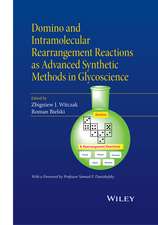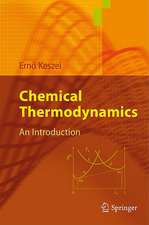Chemical Applications of Atomic and Molecular Electrostatic Potentials: Reactivity, Structure, Scattering, and Energetics of Organic, Inorganic, and Biological Systems
Editat de Peter Politzer, Donald G. Truhlaren Limba Engleză Hardback – 28 feb 1981
| Toate formatele și edițiile | Preț | Express |
|---|---|---|
| Paperback (1) | 958.88 lei 43-57 zile | |
| Springer Us – 24 apr 2013 | 958.88 lei 43-57 zile | |
| Hardback (1) | 959.82 lei 43-57 zile | |
| Springer Us – 28 feb 1981 | 959.82 lei 43-57 zile |
Preț: 959.82 lei
Preț vechi: 1170.51 lei
-18% Nou
Puncte Express: 1440
Preț estimativ în valută:
183.72€ • 199.63$ • 154.42£
183.72€ • 199.63$ • 154.42£
Carte tipărită la comandă
Livrare economică 21 aprilie-05 mai
Preluare comenzi: 021 569.72.76
Specificații
ISBN-13: 9780306406577
ISBN-10: 0306406578
Pagini: 472
Ilustrații: X, 472 p.
Dimensiuni: 156 x 234 x 27 mm
Greutate: 0.86 kg
Ediția:1981
Editura: Springer Us
Colecția Springer
Locul publicării:New York, NY, United States
ISBN-10: 0306406578
Pagini: 472
Ilustrații: X, 472 p.
Dimensiuni: 156 x 234 x 27 mm
Greutate: 0.86 kg
Ediția:1981
Editura: Springer Us
Colecția Springer
Locul publicării:New York, NY, United States
Public țintă
ResearchDescriere
On March 26-27, 1980, a symposium organized by one of us (P. P. ) was held at the l79th American Chemical Society National ~1eeting in Houston, Texas, under the sponsorship of the Theoretical Chemistry Subdivision of the Division of Physical Chemistry. The symposium was entitled "The Role of the Electrostatic Potential in Chemistry," and it served as a stimulus for this book. The original scope and coverage have been broadened, however; included here, in addition to contributions from the eleven invited symposium speakers and two of the poster-session participants, are four papers that were specially invited for this book. Furthermore, several authors have taken this opportunity to present at least partial reviews of the areas being discussed. Most of the manuscripts were completed in the late spring and early summer of 1980. We hope that this book will achieve two goals: First, we are trying to provide an overall picture, including recent advances, of current chemical research, both fundamental and applied, involving the electrostatic potential. Second, we want to convey an appreci ation of both the powers and also the limitations of the electro static potential approach. In order to achieve these goals, we have selected contributors whose research areas provide a very broad coverage of the field. Throughout the book, we have used a. u.
Cuprins
1. Introduction.- I. Atoms, Molecules and Complexes in the Gas Phase.- 2. Relationships between the Energies of Atoms and Molecules and the Electrostatic Potentials at their Nuclei.- 3. Correlation Energies from Hartree-Fock Electrostatic Potentials at Nuclei and Generation of Electrostatic Potentials from Asymptotic and Zero-Order Information.- 4. The Bare-Nuclear Potential as Harbinger for the Electron Density in a Molecule.- 5. Atomic Multipole Expansions of Molecular Charge Densities. Electrostatic Potentials.- 6. Some Relationships between Different Uses of the Electrostatic Potential.- 7. Electrostatic Potential of Free Molecules Derived from Electron Diffraction Results.- 8. Effective Potentials for Intermediate-Energy Electron Scattering: Testing Theoretical Models.- 9. Adiabatic Polarization Potentials for the Water and Nitrogen Molecules. A Comparison of Large and Small Basis Sets.- 10. Energy Decomposition Analysis of Molecular Interactions.- 11. The Role of the Electrostatic Potential in Modeling Hydrogen Bonding and Other Non-Covalent Interactions.- 12. Use of the Electrostatic Potential as a Guide to Understanding Molecular Properties.- 13. The ?-Fluoro Effect: An Empirical Use of Atomic Electrostatic Potentials.- II. Biomolecules.- 14. Electrostatic Potentials as Descriptors of Molecular Reactivity: The Basis for some Successful Predictions of Biological Activity.- 15. Electrostatic Molecular Potential Contour Maps from Ab-initio Calculations. 1. Biologically Significant Molecules. 2. Mechanism of Cationic Polymerization.- 16. The Electrostatic Molecular Potential of the Nucleic Acids.- III. Crystal Phase.- 17. Electrostatic Potentials in Crystals.- 18. Pseudomolecular Electrostatic Potentials from X-ray Diffraction Data.- 19. Transition Metal Ions as Probes of the Molecular Electrostatic Potential: The Case for the Nucleic Acid Bases Cytosine and Guanine.








